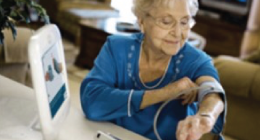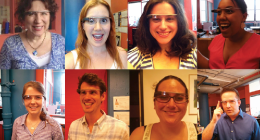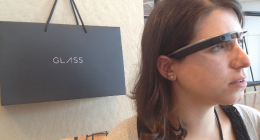Anticipatory Design: What Google and Chipotle Have in Common
November 4, 2015
By Jack Allen, Associate, Research & Consulting

Imagine getting into your car. You are in the driver’s seat, but there is no need to grab the wheel. This car drives itself. Rather than spending the ride to the grocery store watching out for pedestrians and other drivers (all while fumbling with the stereo) you are able to actually take a look out the window to enjoy the passing scenery and lower the volume on your stereo without risking the lives of others. Sounds nice right? While self-driving cars are still far from being a part of the average consumer’s reality, their arrival would bring with them a slew of immense benefits, alarming concerns, and important questions. Now what if I told you that cars may not be the only things driving themselves in the not-so-distant future?
 Amazon Dash, Burritto Button, Google Nest
Amazon Dash, Burritto Button, Google Nest
Enter the world of anticipatory design. In this world, products and services are built to learn users’ behavior and predict needs in an effort to make decisions simpler, sometimes even making them for the user. Picture this. You walk into your favorite lunch spot to find your meal already ordered, prepped, and waiting for you. Now imagine never needing to call a car to take you to your meeting across town as one is already on its way. If this sounds too good to be true, take a look at the services like this that are on the market today. Google’s Nest thermostat learns temperature preferences and sets itself accordingly, turning things off when nobody is home. Google Now uses location data to suggest events happening nearby, and will provide the best route to beat the traffic. Even Chipotle has begun to employ an anticipatory service called the “Burrito Button” for the Apple Watch, (in this case users program their preferences, but it’s not hard to imagine the service learning them instead) much like how Amazon Dash delivers household items at the push of a button. Aaron Shapiro, CEO of design agency Huge, is already experimenting with business models centered on anticipatory service. Recently, his article on the subject “The Next Big Thing In Design? Less Choice” was featured in FastCompany and describes both the fundamental approach to anticipatory design and how to implement it.

It turns out that these services could be much more than a snazzy way to pick up a burrito, as they may also provide some mental health benefits. In his TED Talk “The Paradox of Choice” Barry Schwartz lays out  the ways in which the freedom to choose can be more of a hindrance than a help. In his YouTube video “Does Technology Know Us Better Than Ourselves?” Jason Silva describes it as a “paralysis of choice.” Anyone who has ever spent far too long weighing options on Netflix probably knows what they mean. It turns out the more choices there are, the harder it is to decide, and the less satisfactory the ultimate selection will be. Not only does this detract from the ability to do things better,
the ways in which the freedom to choose can be more of a hindrance than a help. In his YouTube video “Does Technology Know Us Better Than Ourselves?” Jason Silva describes it as a “paralysis of choice.” Anyone who has ever spent far too long weighing options on Netflix probably knows what they mean. It turns out the more choices there are, the harder it is to decide, and the less satisfactory the ultimate selection will be. Not only does this detract from the ability to do things better,
 Paralysis of Choice, Source: The Simpsons
Paralysis of Choice, Source: The Simpsons
but it can make people anxious about the things they may have missed – which is a real concern for the modern user who can access virtually unlimited content via Spotify, Netflix, YouTube, etc.
Furthermore, having to make countless decisions throughout the day weakens the ability to make good ones, a phenomenon known as “decision fatigue.” This is where anticipatory design steps in. Remember how nice that trip to the grocery store was when the car drove itself? Think of how much mental bandwidth could be saved if one wasn’t constantly thinking about how to respond to an email, what movie to watch, or how to get to the restaurant.
This new freedom would come with a cost. If services like these were to truly take off, consumers would have to share lots of data, raising concerns surrounding privacy and cybersecurity. Not to mention the fact that suggestions based on past behavior tend to create a feedback loop that merely reinforces the decisions someone is already making, rather than getting people out of their comfort zone in a productive way. However, this final concern doesn’t worry me. If the self-driving world becomes a reality, the user will still sit in the driver’s seat. The assurance that the car can steer itself allows one to take a moment to pause, look out the window, and notice the roads they have never been down.
What benefits or problems do you see surrounding anticipatory design? Tell us your thoughts below.
Designs By Lisa Vissichelli, Digital Designer & Adel Brihmat, Digital Design Assistant
Edited By Gina Gioldassis, Operations & Communications Coordinator
Social Media by Janine Walsh, Operations & Community Manager














